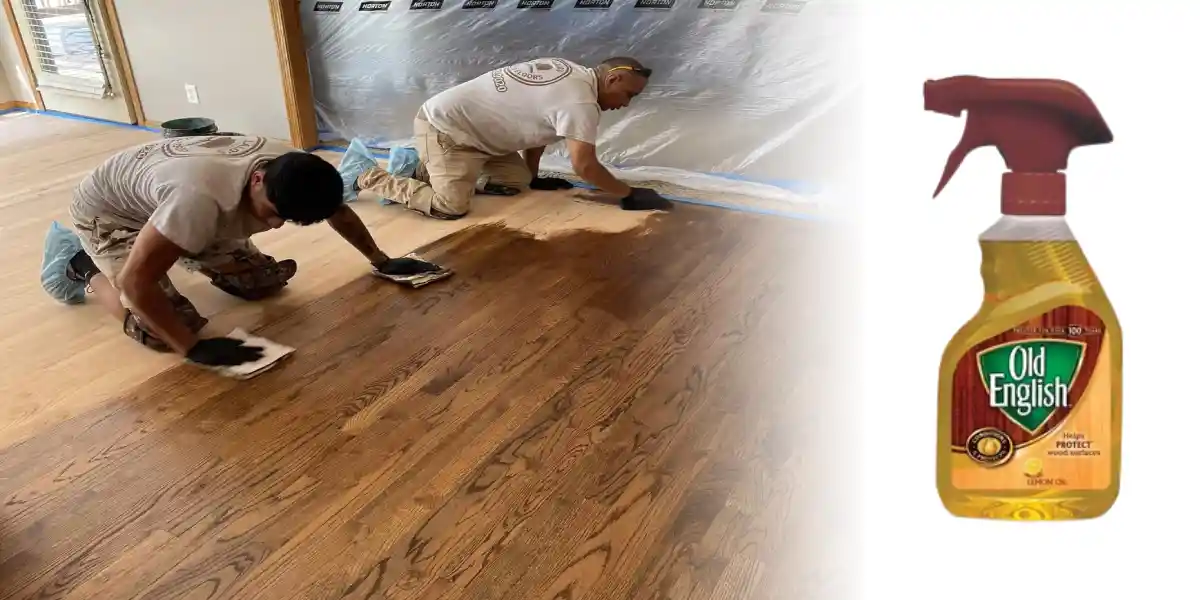Have you inherited a beautiful set of antique wood floors or are lucky enough to own a home with original hardwood? These floors are testaments to a bygone era, and their rich patina speaks volumes of their history. But just like anything beautiful and old, these floors need special care. One product often touted for maintaining wood floors is Old English, but is it really the right choice for antique floors? The answer, as with many things in life, is a bit complicated.

Image: www.tnwoodflooring.com
Old English, with its iconic amber bottle, has been a staple in homes for decades. Its popularity stems from its ability to clean, polish, and protect wood surfaces. But what makes Old English so popular, and is it actually beneficial for your antique floors? This article dissects the pros and cons of using Old English on antique hardwood, and explores alternative solutions for preserving their natural beauty.
Understanding the Nature of Antique Wood Floors
The Importance of Finishes
Antique floors weren’t always finished with the durable polyurethane coatings we see today. Many were coated with beeswax, shellac, or varnish. These historical finishes have distinct characteristics that impact how the floors react to modern cleaning products.
For instance, beeswax is a natural sealant that creates a protective layer. However, it is susceptible to water damage and can become brittle over time. Shellac, a resinous coating, is known for its fast drying time and durability but can become cloudy with age. Varnish, another popular finish, provides a hard, glossy protection but can crack or chip with wear.
The Challenge of Aged Wood
Beyond the finish, the wood itself has aged over time. Exposure to sunlight, moisture, and countless footsteps has caused the wood to become porous, making it more susceptible to damage. Antique floors may also contain paint, stains, or other embellishments applied over the years. These layers contribute to their unique character but can react unpredictably to cleaning agents.

Image: houzztalks.com
The Risk of Over-Cleaning
It’s essential to understand that cleaning antique floors should be a delicate dance. The goal is not to strip away the history and character that makes them unique; instead, it’s about protecting what’s already there. Excessive cleaning or harsh chemicals can damage the finish, expose the underlying wood to wear, and even devalue the floors.
Can I Use Old English? Understanding the Pros and Cons
Now that we’ve explored the sensitivity of antique wood floors, let’s tackle the question: Can I use Old English?
Pros of Using Old English
Old English can indeed be used on some antique floors, but with caution. Its primary benefits include:
- Cleaning: Old English effectively removes dust, dirt, and light grime, providing a clean surface.
- Polishing: It enhances the shine and gloss of the floor, making it look refreshed.
- Protection: The product can create a thin layer of protection against scratches and spills.
- Historical Accuracy: In some cases, Old English can be used to create a similar look and feel to traditional finishes.
Cons of Using Old English
However, using Old English on antique floors isn’t without risks:
- Abrasiveness: Old English contains oils and waxes that can be abrasive on delicate finishes, potentially causing microscopic scratches or damage over time.
- Build-up: Repeated applications can lead to a build-up of the product, creating a dull or cloudy appearance.
- Compatibility Issues: Old English may not be compatible with all antique finishes, potentially reacting negatively and causing damage.
- Unwanted Shine: Some antique floors are intentionally left with a matte or satin finish. Old English can create an unwanted high-gloss sheen that detracts from the floor’s original character.
Alternative Solutions
Given the potential risks, it’s wise to explore alternative solutions for maintaining your antique wood floors:
1. Gentle Cleaning Solutions
For regular cleaning, opt for gentle, pH-neutral cleaners specifically designed for wood floors. These cleaners effectively remove dust and dirt without damaging the delicate finish. You can find these at most hardware stores or online.
2. Professional Cleaning
Sometimes, a professional touch is required. Experienced floor care specialists are equipped to assess the condition of your antique floors and use appropriate cleaning methods. They can employ specialized techniques and products to remove grime, stains, and build-up without harming the original finish.
3. Restoring the Finish
If your floors are in need of a refresh, consider professional restoration. A knowledgeable professional can assess the finish type and determine the most suitable method for restoration. This may involve stripping the existing finish, sanding, and applying a new layer of compatible sealant.
4. Conditioners and Wax
For extra protection, you can use a specialized wood floor conditioner or wax. These products are designed to nourish and protect the wood without altering its appearance. When choosing a conditioner or wax, look for natural ingredients that are compatible with your floor’s finish.
The Importance of Patience and Research
Maintaining antique wood floors is not a one-size-fits-all approach. Patience and research are key. Learning about the specific finish on your floors and the materials used in its construction will guide your cleaning and maintenance decisions. There’s no substitute for understanding the unique history and character of these floors, and the best way to preserve their beauty is through informed, sensitive care.
Can I Use Old English On Wood Floors
Conclusion
Using Old English on antique wood floors can be a gamble. While it boasts cleaning and polishing properties, it can also pose risks to delicate finishes. It’s crucial to prioritize gentle cleaning methods, professional restoration when needed, and consider the overall preservation of these historical treasures. Remember, preserving the authenticity and character of antique floors requires understanding their history, researching appropriate care techniques, and treating them with the respect they deserve.





